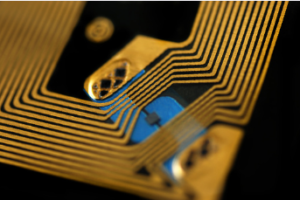RFID tags are critical components of real-time location systems (RTLS). They contain a microchip with an identifier and an antenna for transmitting data to an RFID reader.
Retailers use RFID to streamline inventory management processes and boost customer service. Zara, for example, uses RFID to track each garment from its manufacturing site to the store shelf. For more information about the RFID tags Australia supplier, click here.
RFID tags for inventory management
 RFID tags can be attached to products and items to help businesses manage inventory more efficiently. It can improve accuracy, save time and money, and reduce stockouts and surplus inventory.
RFID tags can be attached to products and items to help businesses manage inventory more efficiently. It can improve accuracy, save time and money, and reduce stockouts and surplus inventory.
Unlike barcodes, which must be held up to scanners for scanning, RFID tags can be passed over an interrogating RFID reader or RFID sensor to book into your inventory software system. It can reduce labour costs and eliminate errors.
A typical RFID tag is a small, circular microchip containing an EPC code and data. This unique identifier is read by RFID readers or sensors and transmitted to a host system, which processes the data for inventory management applications such as supply chain optimisation and access control.
RFID tags for healthcare
The use of RFID in retail is commonplace, but hospitals are another central area where this technology has made a significant impact. RFID tags can be effectively used to track inventory in the medical industry, helping hospitals keep a better grip on their supplies and equipment. For more information about the RFID tags Australia supplier, click here.
Medical device manufacturers also use RFID tags to help with quality control and ensure that their products reach the right doctors and hospitals. It is especially important regarding lab equipment like test tubes, blood vials and slides.
The information encoded in an RFID tag can include the manufacturer, expiration date, and other details critical for drug safety and compliance with regulations such as DSCSA. The data accumulated in an RFID tracking system can then be used to improve hospital staff workflow efficiency, analyse the movements of patients and assets, etc. RTLS solutions that combine RFID and sensors are undeniably an excellent choice for healthcare facilities looking to optimise their operations and reduce costs.
RFID tags for wool
In the wool industry, RFID tags are used to identify bales of wool. The tags contain a unique identifier that can be read by RFID readers located at wool stores, ports, and processing facilities. This technology improves inventory tracking and efficiency, reduces human error, and increases consumer satisfaction. It also reduces the need for recurring transportation and associated CO2 emissions.
Unlike barcodes, which are susceptible to hacking and human error, RFID tags use advanced data encryption, making them resistant. They can also track the movement of items, which helps reduce theft and inventory errors.
The AD TexTrace laundry tag is made from a soft, waterproof, and durable rubber that can withstand high pressure and more than 50 washing cycles. It is a passive RAIN RFID transponder that complies with the ISO/IEC 18000-63 and EPCglobal UHF Gen2 standard. It can be sewn into uniforms or used to track linens in the hospitality and healthcare industries. It can also be attached to fabric lots, cotton bales, and garment components. For more information about the RFID tags Australia supplier, click here.
RFID tags for libraries
Libraries use RFID technology to streamline materials handling, inventory control, and check-out and check-in processes. It allows staff to focus on providing direct customer service. It also reduces the time required to scan and sort items for re-shelving. In addition, it helps identify misplaced books in the collection.
RFID-based systems use automated conveyors and sorters to move materials into carts for re-shelving quickly. These systems also reduce the human labour required for shelf management and help mitigate motion-related injuries.
The RFID tag is pre-programmed with a 14-digit number and the bibliographic information from the library’s database. It is then printed with the library’s name on a white label using a SATO CL408e thermal printer. Since the system uses radio waves, it can be disrupted by metal (such as a book cover).
Comments are closed, but trackbacks and pingbacks are open.